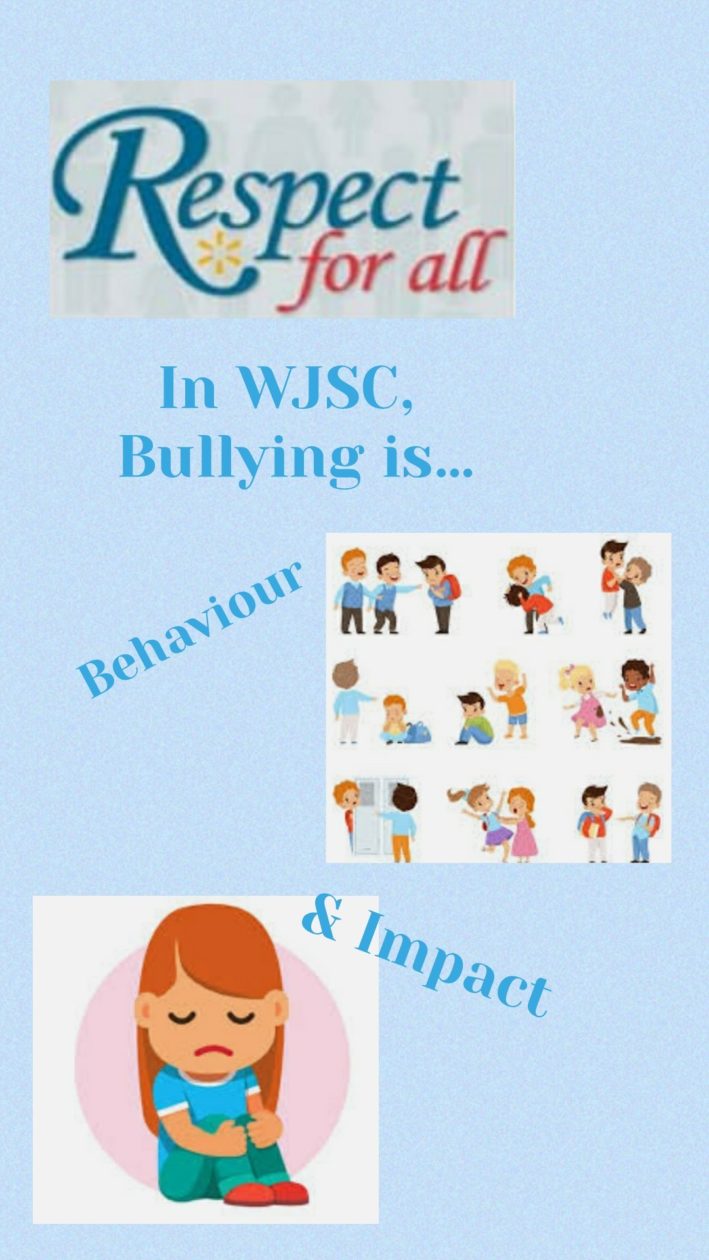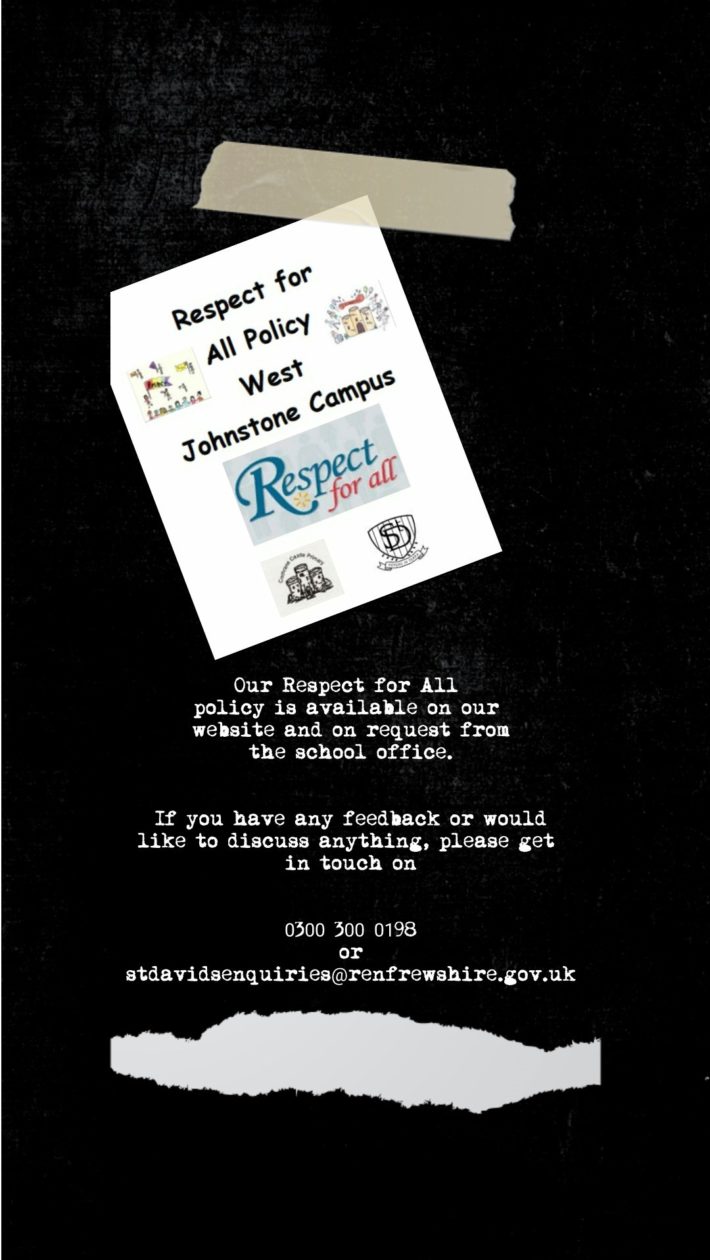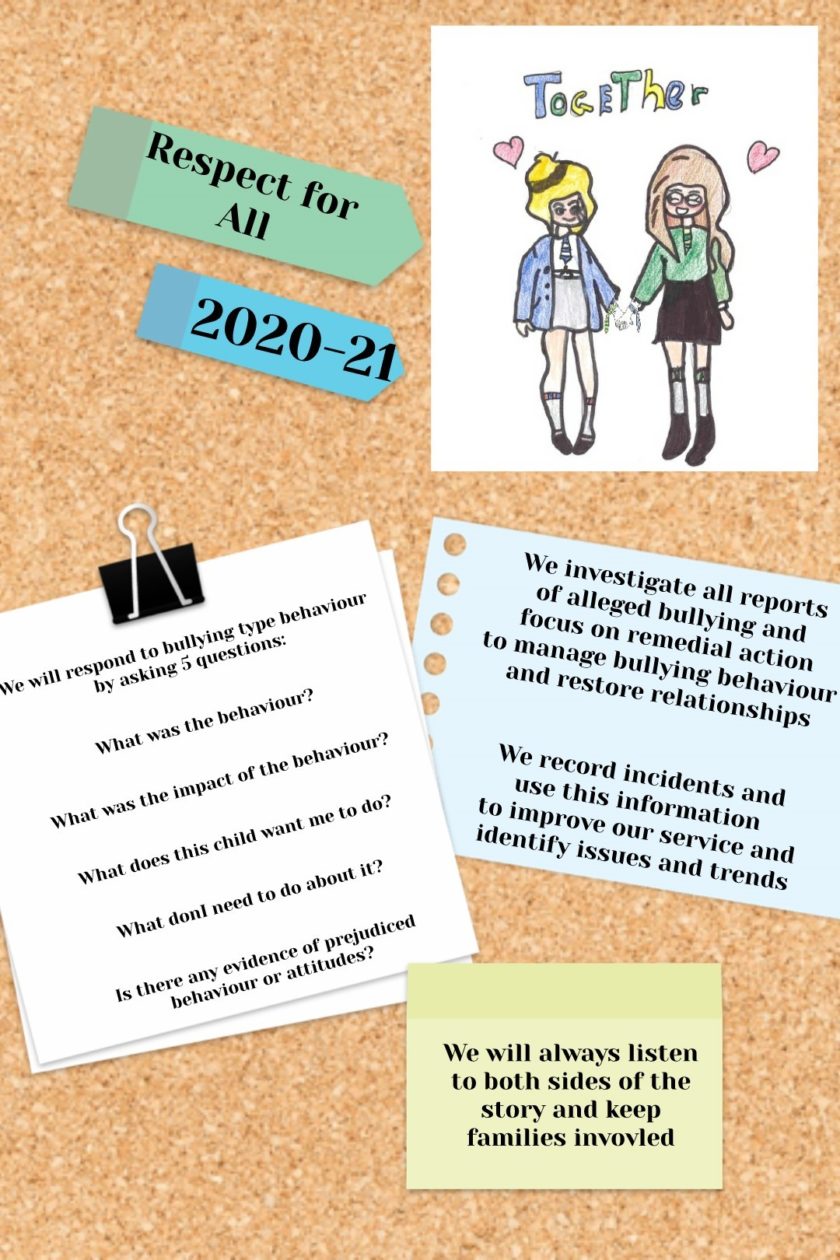
Our Respect for All policy outlines our definition of bullying:
Bullying is both behaviour and impact; the impact is on a person’s capacity to feel in control of themselves. This is what we term as their sense of ‘agency’. Bullying takes place in the context of relationships. It is behaviour that can make people feel hurt, threatened, frightened, left out and lack self-confidence. This behaviour happens face to face and online.
Bullying behaviour can harm people physically or emotionally and, although the actual behaviour may not be repeated, the threat may be sustained over time, typically by actions, looks, messages, confrontations, physical interventions or the fear of these. Bullying behaviour can happen as a one-off incident or can be persistent. Each incident requires investigation to establish whether the
behaviour has been bullying, the impact the behaviour has had and what support is required for all children involved.
In line with ‘Respect for All’ and Renfrewshire Council’s Anti-bullying Policy, West Johnstone Campus recognise that not all disagreements between children and young people are necessarily bullying in nature and the need to consider both the behaviour and impact when investigating and resolving allegations of
bullying behaviour.
Renfrewshire Council and West Johnstone Campus also recognise that labelling children and young people as ‘bullies’ or ‘victims’ can be disempowering and does not help to change behaviour or support recovery from being bullied.
Renfrewshire Council expects adults managing bullying to be able to distinguish between a person and their behaviour. It is also an expectation that all people, including those who are bullying, should always be treated with respect. Not labelling children helps to maintain the adult’s focus and response on the problematic behaviour.
Bullying behaviour can include:
- Being called names, teased, put down or threatened face to face/online
- Being hit, tripped, pushed or kicked
- Having belongings taken or damaged
- Being ignored, left out or having rumours spread about you (face-to-face and/or online)
- Sending abusive messages, pictures or images on social media, online gaming platforms, mobile phone or other devices
- Behaviour which makes people feel like they are not in control of
themselves or their lives or that they have lost their personal power or ‘sense of agency’ (face-to-face and/or online)
- Being targeted because of who you are or who you are perceived to be(face to face and/or online)
Bullying behaviour may be a result of prejudice that relates to perceived or actual differences. This can lead to behaviour and language that could manifest into racism, sexism, homophobia, biphobia or transphobia or prejudice and discrimination towards disability or faith. Prejudice-based bullying is when bullying behaviour is motivated by prejudice based on an individual’s actual or perceived identity; it can be based on characteristics unique to a member of our school community’s identity or circumstance. For example, prejudice arising from socio-economic background, their ability to learn, mental health or a pupil’s appearance.
Online bullying, or ‘cyberbullying’ as it is often referred to on social networking sites and online gaming platforms, will not be treated any differently from face to-face bullying. A person can be called names, threatened or have rumours spread about them and this can (like other behaviours) happen in person and online.












